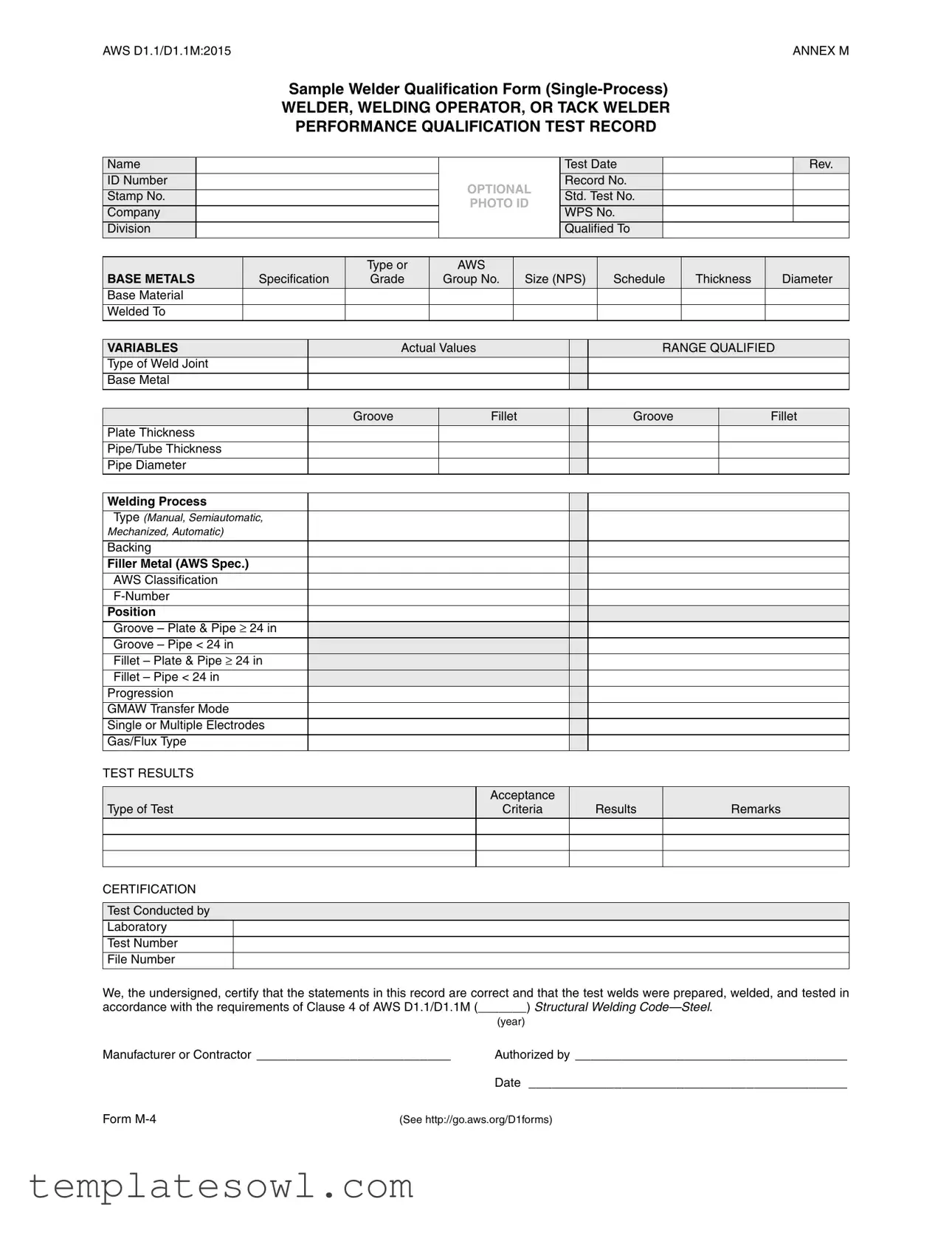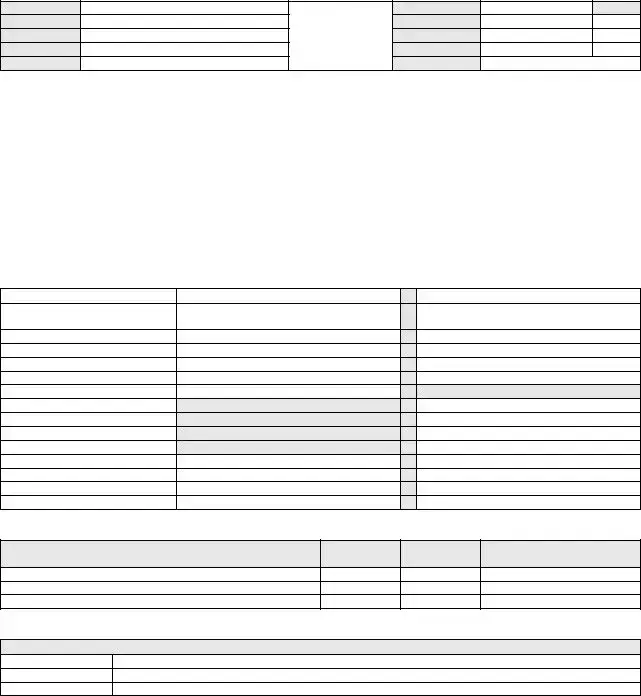What is the purpose of the AWS D1.1 Welder Qualification Form?
The AWS D1.1 Welder Qualification Form is designed to document the qualifications of welders, welding operators, or tack welders. It is an essential record that ensures individuals have completed a performance qualification test according to the standards set forth in AWS D1.1/D1.1M. By filling out this form, employers can verify that their welders possess the necessary skills and have adhered to the required specifications for various welding processes. Including details such as the type of weld joint, the welding process used, and the base metals involved, the form also serves as proof of compliance with industry standards.
What information is required on the form?
The form requires multiple pieces of information to comprehensively capture the welder's qualifications. Key fields include the welder's name, ID number, and company details. It should also include specifics about the test, like the date conducted, test number, and corresponding Welding Procedure Specification (WPS) number. Furthermore, details on the base metals, including their specifications, size, and any applicable AWS classifications, need to be filled in. The results section captures the type of test performed, acceptance criteria, and outcomes, ensuring a thorough overview of the welder’s capabilities.
Who can conduct the qualification test and complete the form?
The qualification test must be conducted by a qualified testing laboratory, ensuring that the procedure is executed in accordance with standard requirements. This laboratory is responsible for overseeing the process and validating test results. Upon completion, the form must be certified by the authorized personnel from the manufacturer or contractor. Their signature on the form attests to the accuracy of the information recorded, confirming that the test welds were prepared and evaluated as per AWS D1.1/D1.1M standards.
How long is the certification from the AWS D1.1 Welder Qualification Form valid?
The certification resulting from the AWS D1.1 Welder Qualification Form does not have a strict expiration date but is contingent upon the welder's continuous proficiency and adherence to welding procedures. If a welder changes processes, materials, or if significant time has lapsed since their last qualification test, they may need to retake the performance qualification test to remain compliant. Regular assessment and documentation help ensure that welders maintain their skills and meet the evolving demands of the industry.

